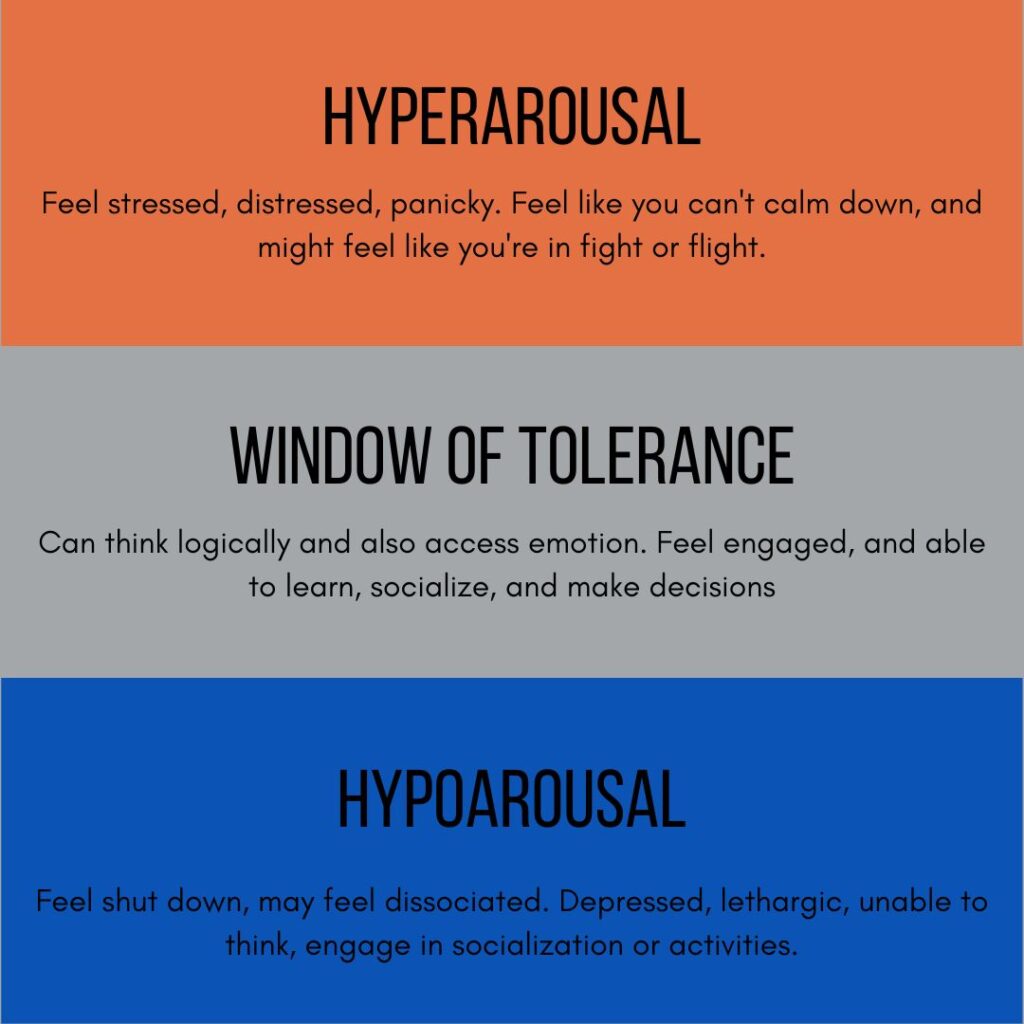The concept behind trauma informed barbell training is pretty simple: it just means approaching lifting barbells in a way that is sensitive to the fact that you may have experienced trauma. Psychological trauma is a lot more common than you might think, and lifting can provide a powerful healing experience, support reconnection with your body, and help people relearn (or learn) to regulate their nervous system arousal levels. Estimates indicate that about half of adults have experienced childhood abuse, whether physical, emotional, or sexual. People experience many kinds of trauma, ranging from abuse, traumatic loss, accidents, disasters, work or battle related trauma, illness, assault, and innumerable others.
If you’ve experienced trauma, your sense of how much nervous system arousal you can tolerate can be skewed. Trauma can jack up your nervous system’s ability to manage arousal. People experience both hyperarousal (generally thought of as fight/flight) and hypoarousal (generally thought of as freeze). Your window of tolerance is the amount of hypo- & hyper- arousal that you can tolerate.

Ideally, your window should include a bit of both hypo- and hyper- arousal. If it’s really difficult for you to handle any hypoarousal, even common emotional experiences like boredom may feel positively intolerable for you. On the other hand, if you mostly live in hypoarousal, and have a difficult time tolerating any amount of nervous system arousal, you may find that you can’t engage in a lot of your life because you’re basically living in shutdown.
For some trauma survivors, this window might be very narrow and/or skewed. If this is the case, we want to work on expanding the window to allow for the client to expand their ability to cope with life. Movement is one tool that can help to move between states.
Sometimes, when you’re in hypoarousal, it may help to get up and literally shake it off. If you find yourself in a dissociated or kind of shutdown state, give this a try! You can get up from where you are, and shake your arms and head out. Try shaking your legs a little bit. Maybe flick your hands, as though you were trying to flick water off of them.
In hyperarousal, it might help to do ball slams or other big, full body, powerful feeling movements. Experiment with what feels best in your body to expel that energy.
Recovering from trauma can be a long and layered journey. Movement can be one powerful tool in supporting you along your way. If you want to explore more about using movement on your recovery journey, check out our upLIFT program, starting in January. upLIFT is a six week program geared towards new lifters who have survived some type of trauma. Past participants said the program gave them “a better sense of how to do all these barbell movements safely, and a lot of introductory familiarity with weight lifting.” We keep the group size small to reduce the gym intimidation, and support building a community. We won’t be specifically talking about trauma or sharing trauma stories; instead, the focus is on the here and now: lifting and being aware of your body.
We’ll be meeting Sunday afternoons starting in January, and you’ll learn back squats, front squats, overhead press, deadlift, bench press, and more. This provides a foundation to continue lifting, and helps you build better awareness of your body. You can learn more here!
